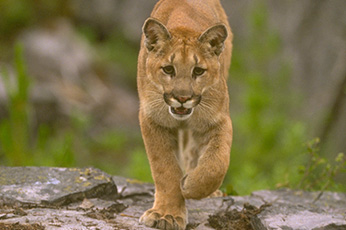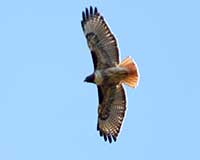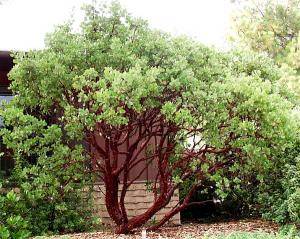FACTS
The California mountain region is made up of two main mountain areas.
The first is the Coast Ranges near the California coast. The second is the Inland Mountains consisting of the Sierra Nevada Mountains and the Cascade Mountains.
The Cascade Mountains are unique because millions of years ago they were formed by volcanoes. When the lava oozed from the Earth's crust and cooled they hardened into mountains. One active volcano is Lassen Peak located in the Cascade Mountains.
The Sierra Nevadas span nearly 400 miles across California. The name Sierra Nevada is Spanish for "snowy range."
A mountain is considered a "mountain" if it reaches at least 2,000 feet above sea level.
The highest peak in the contiguous U.S. is Mount Whitney at 14,505 feet, located within the Sierra Nevada. Glaciers moved across the high mountains millions of years ago and carved deep canyons through the Sierra Nevadas. When the glaciers melted, hundreds of streams and lakes were created. In the higher elevations peaks of the mountains are covered with snow all winter long.
The first is the Coast Ranges near the California coast. The second is the Inland Mountains consisting of the Sierra Nevada Mountains and the Cascade Mountains.
The Cascade Mountains are unique because millions of years ago they were formed by volcanoes. When the lava oozed from the Earth's crust and cooled they hardened into mountains. One active volcano is Lassen Peak located in the Cascade Mountains.
The Sierra Nevadas span nearly 400 miles across California. The name Sierra Nevada is Spanish for "snowy range."
A mountain is considered a "mountain" if it reaches at least 2,000 feet above sea level.
The highest peak in the contiguous U.S. is Mount Whitney at 14,505 feet, located within the Sierra Nevada. Glaciers moved across the high mountains millions of years ago and carved deep canyons through the Sierra Nevadas. When the glaciers melted, hundreds of streams and lakes were created. In the higher elevations peaks of the mountains are covered with snow all winter long.
CITIES

http://www.citytowninfo.com/images/state-maps/california-reference.gif
CLIMATE
The Coastal Mountain range is located near the ocean and extends through two-thirds of the state. The coastal side is typically foggy, moist and cool, while on the eastern side, the temperatures are higher, and there is less precipitation.
California's large eastern Sierra Nevada range has a Mediterranean-like climate below 6,000 feet. Winters are wet and cool, while summers are warmer and drier. The highest regions have snow year-round, but most of it accumulates during the winter months.
http://www.ask.com/science/climate-california-s-mountain-region-306fc782b154bd61
Unique to the region is a phenomenon called the Rain Shadow Effect.
According to National Geographic A rain shadow is a patch of land that has been forced to become a desert because mountain ranges blocked all plant-growing, rainy weather. On one side of the mountain, wet weather systems drop rain and snow. On the other side of the mountain—the rain shadow side—all that precipitation is blocked.
In a rain shadow, it’s warm and dry. On the other side of the mountain, it’s wet and cool. Why is there a difference? When an air mass moves from a low elevation to a high elevation, it expands and cools. This cool air cannot hold moisture as well as warm air. Cool air forms clouds, which drop rain and snow, as it rises up a mountain. After the air mass crosses over the peak of the mountain and starts down the other side, the air warms up and the clouds dissipate. That means there is less rainfall.
https://www.youtube.com/watch?v=ez99nyfSHCk
California's large eastern Sierra Nevada range has a Mediterranean-like climate below 6,000 feet. Winters are wet and cool, while summers are warmer and drier. The highest regions have snow year-round, but most of it accumulates during the winter months.
http://www.ask.com/science/climate-california-s-mountain-region-306fc782b154bd61
Unique to the region is a phenomenon called the Rain Shadow Effect.
According to National Geographic A rain shadow is a patch of land that has been forced to become a desert because mountain ranges blocked all plant-growing, rainy weather. On one side of the mountain, wet weather systems drop rain and snow. On the other side of the mountain—the rain shadow side—all that precipitation is blocked.
In a rain shadow, it’s warm and dry. On the other side of the mountain, it’s wet and cool. Why is there a difference? When an air mass moves from a low elevation to a high elevation, it expands and cools. This cool air cannot hold moisture as well as warm air. Cool air forms clouds, which drop rain and snow, as it rises up a mountain. After the air mass crosses over the peak of the mountain and starts down the other side, the air warms up and the clouds dissipate. That means there is less rainfall.
https://www.youtube.com/watch?v=ez99nyfSHCk
For local mountain weather:
ANIMALS

Mountain Lion
https://www.wildlife.ca.gov/Keep-Me-Wild/Lion

Mule Deer
https://www.wildlife.ca.gov/Keep-Me-Wild/Deer

Coyote
https://www.wildlife.ca.gov/Keep-Me-Wild/Coyote

Red Tailed Hawk
http://ewombat.com/doc/species/animalia/chordata/aves/accipitriformes/accipitridae/buteo_jamaicensis.html

Turkey Vulture
http://ewombat.com/img/photo500/species/animalia/chordata/aves/accipitriformes/cathartidae/20101129-001659.jpg

California Golden Trout
http://www.streamexplorers.org/atf/cf/%7B91C7DE6A-1064-4F57-87A6-5D8786DA1F8E%7D/GOLDEN-TROUT.jpg
PLANTS

Douglas Fir
https://www.extension.iastate.edu/forestry/iowa_trees/tree_id_photos/FIR_DOUGLAS_form.jpg

Manzanita
https://www.villagenurseries.com/wp-content/uploads/2014/07/201_img.jpg

Sage Brush
http://www.salmonvalley.org/wp-content/uploads/2013/04/sagebrush-1.png

Snowplant
http://www.mountainproject.com/v/106495882

Mountaineer Shooting Star
http://www.mountainproject.com/v/106495899
Resource: California Geography (C) 2009 splashpublications.com
No comments:
Post a Comment
Note: Only a member of this blog may post a comment.